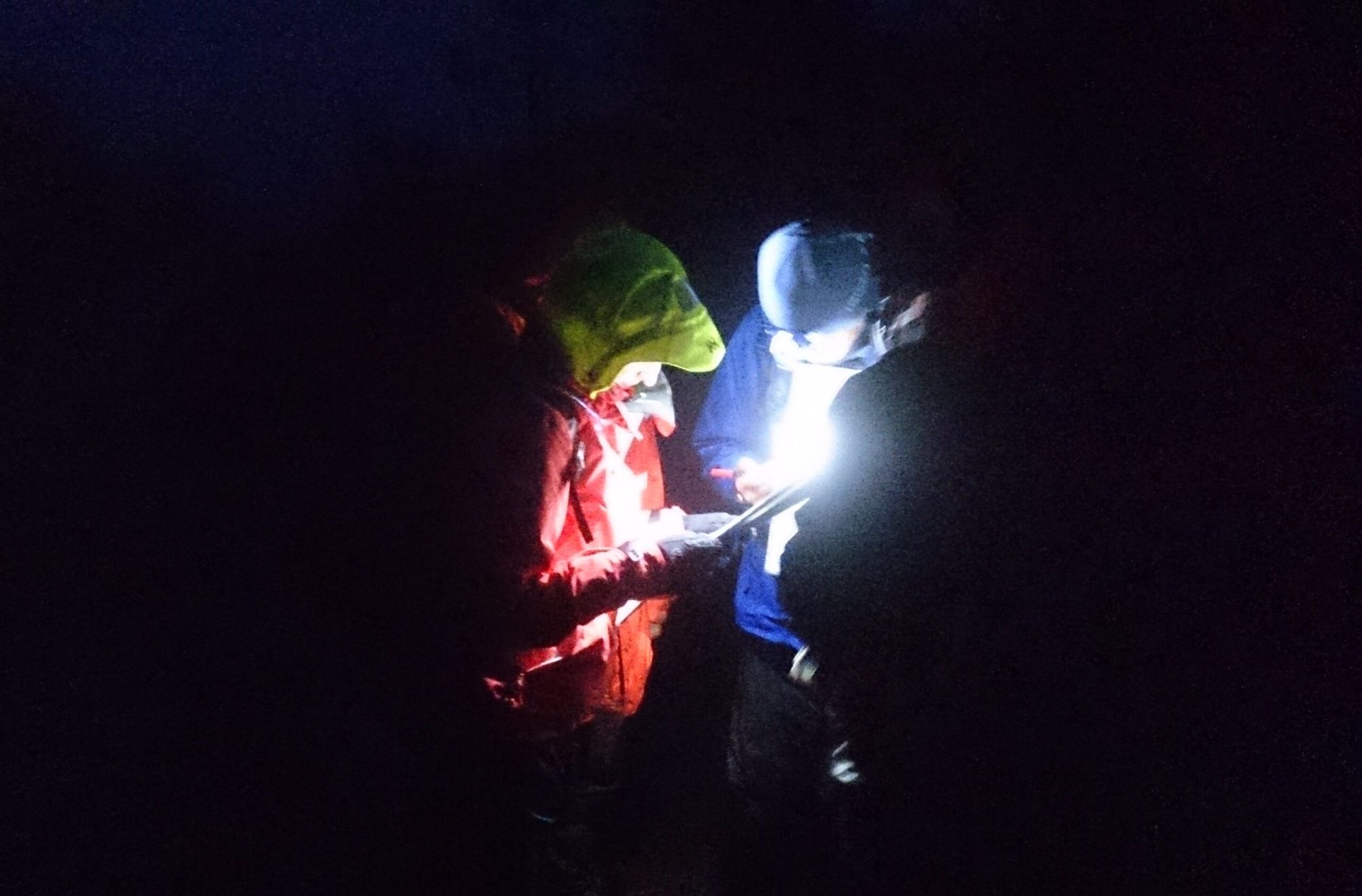Hill Skills Series – 8 Tips For Successful Night Hiking

As the nights draw in and the available daylight hours decrease, there is an increasing risk of having to finish your hike in the dark. Or on the other hand, maybe you want to try a bit of hiking after nightfall? Either way, hiking at night is a completely different experience, your perception of height and depth is radically altered and familiar landmarks disappear from view, so being prepared is essential.
Whether you are looking for a bit of adventurous night hiking, or you find yourself out later than you expected, the basic rules for survival and comfort in the hills and mountains after dark are the same:
Carry a headtorch.
If you are planning to be out after dark, or you are hiking in the winter months with shorter daylight hours, you need to be carrying a headtorch. This is preferable to a hand held torch as your hands are free for other tasks, using your map and compass, for example. LED torches are almost universally used now, the battery life is considerably longer than with conventional bulbs. LED torches often offer a red light option, which can help preserve night vision.
Carry a spare headtorch.
If the batteries in your torch fail you can replace them, but have you ever tried changing batteries in the dark? It’s not that easy. What if you loose your headtorch, or it breaks?
Better to carry a reserve with fully charged batteries, one day you’ll be thankful you did.
 |
| Petzl headtorches |
Try to preserve your night vision.
Delay turning on your light to the very last minute, you would be surprised how much you can see when you allow your ‘night vision’ to develop naturally as the light fades. Once you turn on a torch this is lost, and can take up to an hour to restore. So have faith in your eyesight.
When you are using your torch, remember to angle the beam down, and don’t shine it in the faces of your companions, it’s really not very pleasant.
Be prepared for darkness.
You know it’s going to get dark, so get your torch out of your rucksack and keep it handy, on your head or in a pocket. Similarly, keep your compass and map close to hand, and get out those gloves and warm hat, and maybe a jacket, it can cool down rapidly after dark.
Remember to stay warm.
You know how to navigate, right?
Polish up those navigation skills before you get caught out in the dark. Tick features, linear features. walking on a bearing, timing and pacing, and aspect of slope are all important navigation techniques when faced with the ultimate in poor visibility, pitched darkness.
Carrying a map-based GPS system is always a good backup plan. Viewranger for smart phones is a good option I have found, but don’t rely on it solely, phone batteries can run down rapidly, especially when it gets really cold.
Don’t be afraid.
The mountains don’t change shape after nightfall, it just looks that way sometimes, trust your map and compass.
Oh, and there are no vampires out there, those staring green eyes you see belong to the sheep, probably.
 |
| No, not Dracula. |
Go with friends.
If you are trying night hiking intentionally, and why shouldn’t you it’s great fun, then go with company. It will be safer and a lot more fun.
At the same time, stick to a route you have done in daylight previously, it will look and feel different, but you have the reassurance of being on familiar terrain.
Check the weather.
Keep an eye on the weather forecast before you head out after dark. Night hiking in rain and hill fog can be unpleasant at best, and adds considerably to the navigation difficulties.
By being prepared, and having the right navigation skills, no-one need fear hiking after nightfall. Being caught out after dark and not being able to get off the hill is a poor excuse for calling out mountain rescue.
Russ Mills owns and runs Mountaintrails, guided hiking, navigation and hill skills courses in Ireland and the UK.
